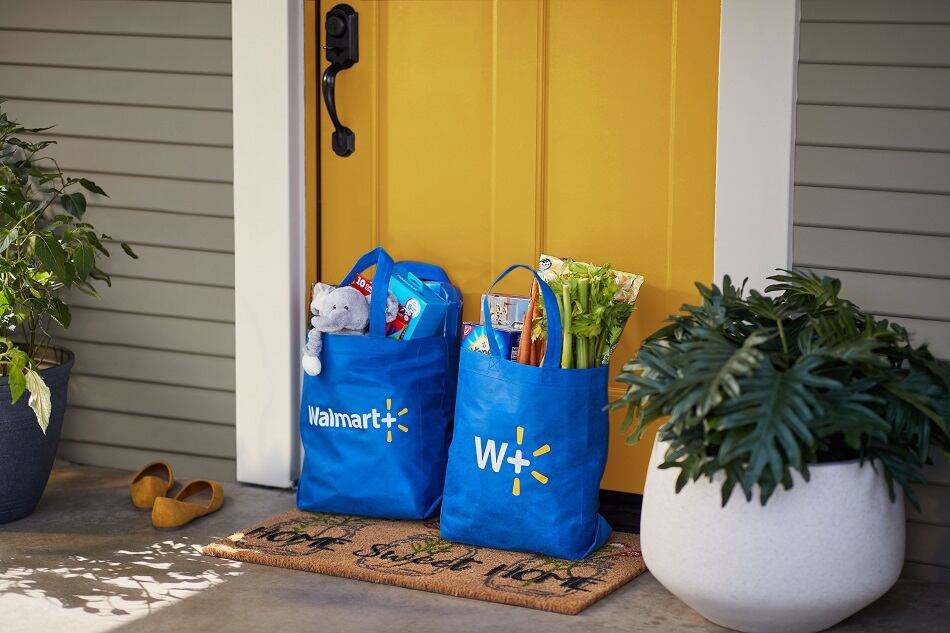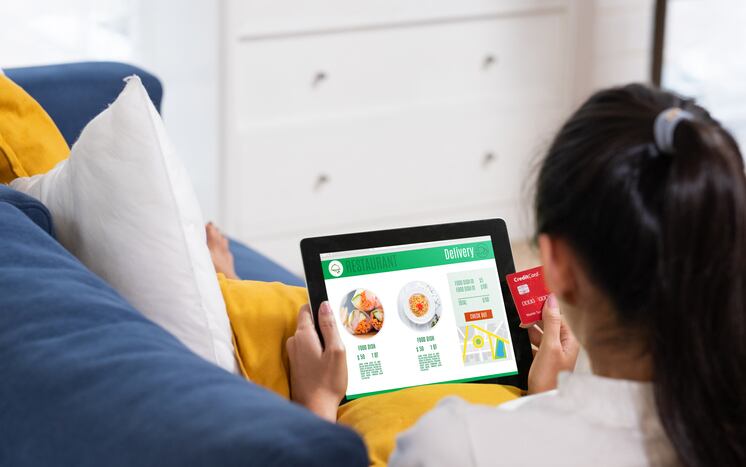During virtual interviews at the Barclays Global Consumer Staples Conference Sept. 8 and Goldman Sachs’ Global Retailing Conference Sept. 9, Walmart CFO Brett Biggs acknowledged several factors that impacted the retailer’s grocery performance, which grew mid-single digits during the company’s second quarter compared to some of its peers which saw sales gains exceeding 20% since the pandemic was declared.
While Biggs was quick to describe Walmart’s food sales as “a solid, steady business” and predicted “we’ll continue to grow share over time,” he acknowledged during the Goldman Sachs Global Retailing Conference that assessing the company’s performance alongside competitors is “a noisy read and probably will be for a while.”
He explained to Goldman Sachs analyst Kate McShane that while “I don’t want things to come across as excuses … there are reasons we think why it looks so noisy.”
Among these was the extra financial security that stimulus funding afforded some consumers to prioritize convenience over price when shopping during the pandemic.
“If you look at the last few months, there’s probably a little bit of an argument that can be made that people got a little less price conscious, which is somewhat counterintuitive, but with all of the stimulus dollars that were going through the economy, I think they got a little less price-conscious, maybe a little more convenience-focused,” he said.
This translates in part to some shoppers willing to pay more to shop at closer or less crowded stores and those with inventory of products they wanted and at times they wanted – two other pain points for Walmart during early days of the pandemic.
Biggs explained that during the first weeks of the pandemic Walmart “took operating hours down more quickly than some competitors and actually took longer to take them back up. We’ve just recently gone back to 10 [pm] closing in our Supercenters. We had gone to 8:30 [pm]. There’s a lot of business that gets done between 8:30 and 10:30 at night.”
Similarly, he acknowledged, that Walmart struggled with inventory during the pandemic, which also cost it some business. But, he added, most supply chains have recovered, and the company is able to meet consumer demand.
Despite consumers current willingness to pay more for products, Biggs said that Walmart will continue to invest in price knowing that longer term recessionary pressures are likely to again alter shopping habits – pushing cash strapped consumers to shop based on price and value.
“Price is going to matter forever, as far as I believe, and so I feel good about our position,” Biggs said.
Investing in ecommerce
The retailer also is doubling down on ecommerce, which played a prominent role in the company’s long-term planning prior to the massive shift to online shopping inspired by the pandemic.
“The framework of the [ecommerce] strategy hasn’t changed. We want to get more brands onto the site and that could be first-party or it could be third-party,” Biggs said, noting that currently the retailer has at least 160,000 items eligible for same day delivery.
The upcoming launch of its ecommerce membership program, Walmart+, also should help more consumers see the retailer as a convenient online solution that can compete more directly with Amazon Prime.
The rollout of Walmart+ and the retailer’s general push for increased ecommerce share comes at a time when the retailer reports having significantly lowered ecommerce losses.
“We felt good about the direction of the profitability on ecommerce for several quarters now and we said coming into the year we thought losses would be lower. So, we felt good about what we were seeing and it’s in several categories,” Biggs said.
“One is just top-line. We’ve basically doubled the size of the business in the second quarter and that helps a lot of things when you get sales growth like that,” he explained.
Also, he noted, “the variable cost of fulfill has been getting better every quarter, every year,” and profit margins also are improving as the company has expanded into “bigger areas like home and apparel, which have higher margin structures.”
Ultimately, Biggs says he feels good about Walmart’s food and beverage, as well as overall, business and believes it is on the best path forward even though 2020 has proven difficult to predict.




